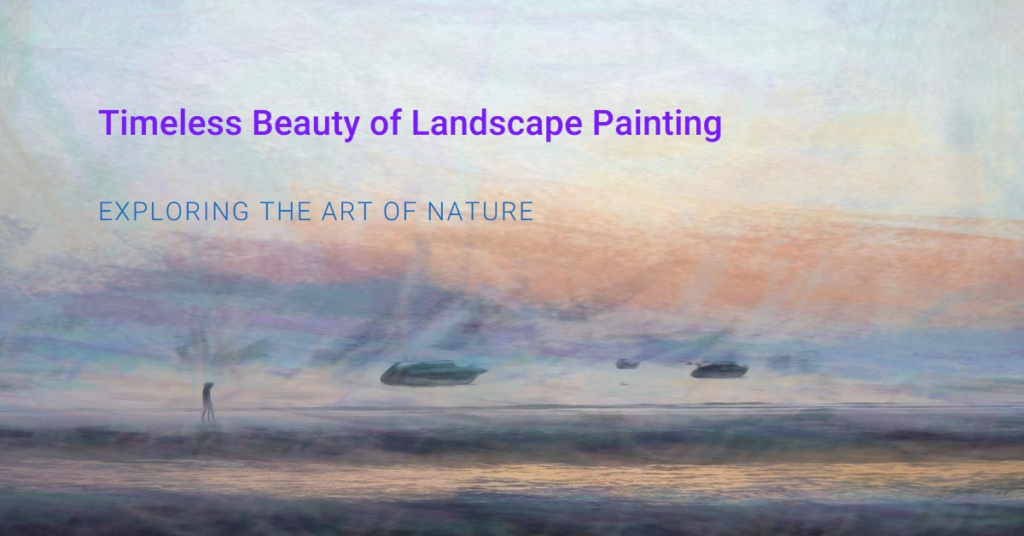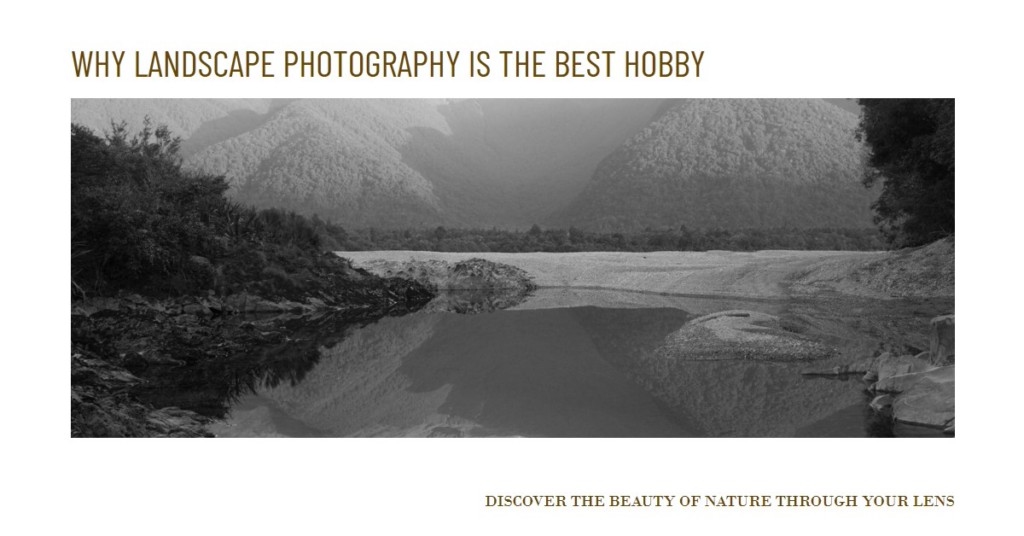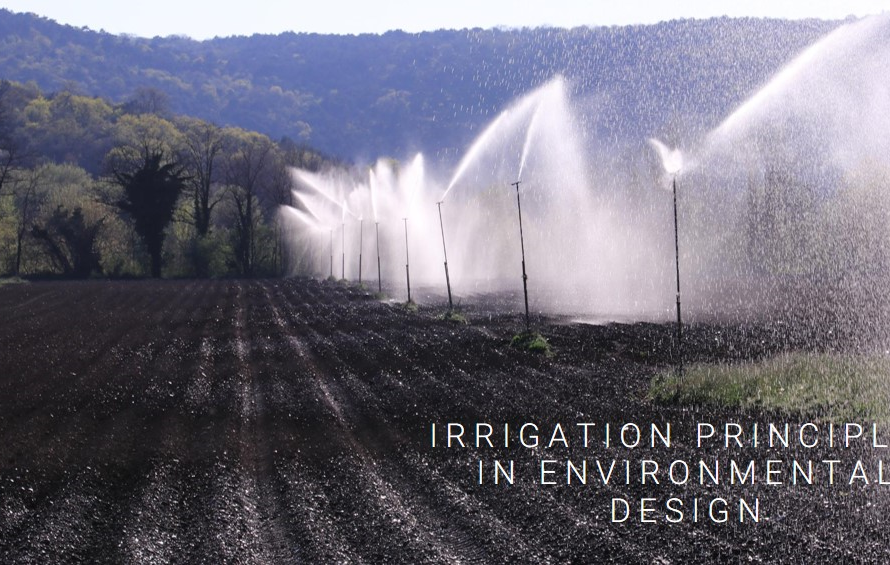
Table of Contents
- Introduction: The Everlasting Charm of Landscape Art
- Historical Roots: The Genesis of Landscape Painting
- Evolution of Techniques: Mastery Through Innovation
- The Emotional Impact: Nature’s Influence on the Human Soul
- Cultural Reflections: Landscapes as Mirrors of Society
- Artistic Techniques: The Craft Behind the Canvas
- The Influence of Technology: From Easels to Digital Canvases
- Contemporary Landscape Painting: Bridging Tradition and Innovation
- Collecting Landscape Art: A Timeless Investment
- Conclusion: The Eternal Appeal of Landscape Painting
Introduction: The Everlasting Charm of Landscape Art
Landscape painting, an artistic tradition as old as civilization itself, continues to captivate audiences worldwide. Its timeless appeal lies not only in its ability to depict the natural world but also in its capacity to evoke deep emotions and provoke thoughtful contemplation. In this blog post, we will explore the reasons behind the enduring allure of landscape painting, examining its historical significance, artistic techniques, and its profound impact on both artists and viewers alike.
Historical Roots: The Genesis of Landscape Painting
The history of landscape painting stretches back thousands of years, with its origins rooted in the ancient civilizations of Egypt, Greece, and Rome. These early depictions of the natural world were often idealized and served as backdrops for mythological and historical scenes. However, it wasn’t until the Renaissance that landscape painting began to emerge as a distinct genre.
During the Renaissance, artists like Leonardo da Vinci and Albrecht Dürer started to explore the natural world with scientific curiosity and artistic precision. Their works laid the groundwork for future generations, establishing landscape painting as a legitimate and respected form of art.
Evolution of Techniques: Mastery Through Innovation
As the centuries progressed, so did the techniques and styles employed by landscape painters. The Baroque period saw artists like Claude Lorrain and Nicolas Poussin perfecting the use of light and shadow to create depth and drama in their works. This era emphasized the grandeur of nature and the sublime, often depicting sweeping vistas and dramatic skies.
The 19th century brought about the advent of Impressionism, where artists such as Claude Monet and Camille Pissarro revolutionized landscape painting with their focus on capturing fleeting moments and the ever-changing qualities of light. Their innovative brushwork and vibrant color palettes continue to influence contemporary artists today.
The Emotional Impact: Nature’s Influence on the Human Soul
One of the most compelling reasons landscape painting remains timeless is its ability to evoke a wide range of emotions. The tranquility of a serene countryside, the awe-inspiring majesty of towering mountains, and the melancholic beauty of a stormy sea all resonate deeply with viewers. Landscape paintings offer a window into the sublime, providing solace and inspiration in an increasingly hectic world.
Moreover, landscape painting allows viewers to connect with nature on a personal level. In an era where urbanization and technology often distance us from the natural world, these artworks serve as a reminder of the beauty and power of our environment. This emotional connection ensures that landscape painting remains relevant and cherished.
Cultural Reflections: Landscapes as Mirrors of Society
Landscape paintings often reflect the cultural and societal values of their time. For instance, during the Romantic period, artists like J.M.W. Turner and Caspar David Friedrich depicted nature as a powerful, almost spiritual force, reflecting the era’s fascination with the sublime and the transcendental.
In contrast, the landscapes of the Hudson River School artists in 19th-century America celebrated the untamed wilderness and the notion of Manifest Destiny, capturing the spirit of exploration and expansion. These cultural reflections provide valuable insights into the historical context and societal attitudes of different periods, making landscape paintings not only visually appealing but also historically significant.


Artistic Techniques: The Craft Behind the Canvas
The mastery of landscape painting involves a deep understanding of various artistic techniques. Composition, perspective, color theory, and brushwork all play crucial roles in creating a compelling landscape. The careful arrangement of elements within a painting guides the viewer’s eye and creates a sense of balance and harmony.
Additionally, the use of light and shadow can dramatically alter the mood and atmosphere of a landscape. Techniques such as chiaroscuro, which contrasts light and dark, and sfumato, which creates a soft, hazy effect, are employed to add depth and realism. These techniques, refined over centuries, demonstrate the skill and dedication required to excel in landscape painting.
The Influence of Technology: From Easels to Digital Canvases
The advent of technology has significantly impacted the field of landscape painting. While traditional methods and materials remain popular, digital tools have opened up new possibilities for artists. Digital painting software allows for greater experimentation with colors and textures, and the ability to undo mistakes instantly encourages creativity and innovation.
Moreover, technology has made art more accessible. High-quality reproductions of famous landscape paintings are now available online, allowing people to appreciate and study these masterpieces from the comfort of their homes. This democratization of art has contributed to the enduring popularity of landscape painting.
Contemporary Landscape Painting: Bridging Tradition and Innovation
In today’s art world, contemporary landscape painters continue to draw inspiration from the past while incorporating modern elements and techniques. Artists like David Hockney and Gerhard Richter blend traditional painting methods with digital technology, creating works that are both familiar and fresh.
Furthermore, contemporary landscape painting often addresses current environmental issues, raising awareness about climate change, deforestation, and pollution. By highlighting the beauty and fragility of our natural world, these artists encourage viewers to reflect on their own relationship with the environment and consider their impact on it.
Collecting Landscape Art: A Timeless Investment
For art collectors, landscape paintings represent not only aesthetic value but also a sound investment. The timeless appeal of these works ensures their enduring popularity, making them a valuable addition to any collection. Collectors are drawn to the beauty, historical significance, and emotional resonance of landscape paintings, which can enhance both personal and public art collections.
Additionally, the market for landscape art remains robust, with works by renowned artists fetching high prices at auctions and galleries. This financial stability, coupled with the intrinsic beauty of the art, makes landscape paintings a worthwhile investment for collectors.
Conclusion: The Eternal Appeal of Landscape Painting
In conclusion, the timeless art of landscape painting continues to captivate and inspire. Its rich history, evolving techniques, and profound emotional impact ensure its enduring relevance in the art world. Whether reflecting cultural values, showcasing artistic mastery, or addressing contemporary issues, landscape paintings offer a unique and powerful means of connecting with the natural world.
As we navigate an increasingly complex and fast-paced world, the serene beauty and contemplative nature of landscape art provide a much-needed respite. This timeless art form will undoubtedly continue to inspire and resonate with audiences for generations to come, solidifying its place as a cornerstone of artistic expression.


